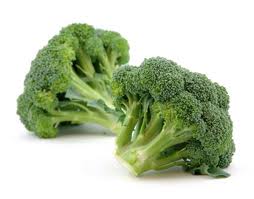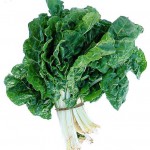I've got a story to tell you,, a story about how to cement new changes. It’s a story about how I messed up...but in a very good way <3. This month in Your Beautiful Life, we’re all doing a Real Life Healthy Eating challenge, and it’s been pretty fun so far.
Top 4 Foods to Remove From Your Diet Today
Brain Fuel for School
Should we consider our child’s diet as a tool for learning? Absolutely! Leading nutritional researchers are learning more every day about the power certain foods have on growing bodies. A healthy diet helps to build a better brain and a stronger immune system. As well, it can supply school-aged children with the focus needed to sit through math class, enjoy a good book, or have the energy to play a fun game after school.
Breakfast
This is a meal that can make or break your child’s day. A good breakfast will fuel your child’s energy and mind, but a high carb/high sugar breakfast may lead to energy lows and mood swings all day. Instead, start your child off right with a healthy, higher protein breakfast.
A good breakfast includes a good source of protein, whole grains, and is balanced nutritionally. Some examples of great breakfasts include: a poached egg on sprouted grain toast, 5% fat yogurt with homemade granola, and long-cook oatmeal with hemp seeds and berries.
Lunch
The best lunch for your child is always one you pack yourself. A sandwich made with sprouted grain bread, leftover meats, lettuce, and hummus makes a fantastic balanced lunch. Some carrot sticks or an apple rounds it out nicely. Juice packs and sugary drinks can cause an energy dip at the end of the school day. Pack water instead, or dilute 100% fruit juice with water.
After School Snack
Growing kids need more than 3 meals a day and an after-school snack is a must. This is also a great time to give them another serving of fruit or veggies that are a great source of vitamins and minerals to help support a healthy immune system. Vitamin C can help the body fight off colds and infections. Oranges, strawberries, and bell peppers are great sources of Vitamin C. Alternatively, a sugary snack after school may lead to problems sleeping, weaken his/her immune system, and make your child more prone to getting a cold.
Dinner
The best dinner for your child is one eaten with the family. This is a wonderful time to talk and come together as a group. It is also a great way to expand the palate of your picky eaters. It can take 8 – 10 introductions to a new food before your child begins to enjoy it, so be patient and keep trying. Prepare a healthy meal full of quality protein, a variety of colourful vegetables and whole grains, and he/she will get all of the nutrients requires for a strong body.
Overall, spend some time watching how your child reacts to different food choices. What meal choices keep his/her energy steady, mood balanced, and body strong? Provide a healthy variety of food for you and your family and you’ll child with have fewer sick days and better concentration through this school year.
Lisa Kilgour is a Registered Holistic Nutritionist. She provides one-on-one consultations and teaches workshops in the Okanagan. To find out the underlying cause of your symptoms, or to find the diet that helps you feel your best, visit www.EatMoreRealFood.com or call 250.869.9434.
Copyright © 2008- 2013 EatMoreRealFood.com. This article is of the copyright of EatMoreRealFood.com and the author; any reproduction, duplication and transmission of the article are to have prior written approval by EatMoreRealFood.com or the author.
Take Control Of Your Allergies!
It would usually happen around this time of the year. I would wake up in the morning and suddenly become a giant ball of mucous. Yes, it was really that attractive :). For most of the spring I would sneeze and sneeze and then have a bit of a break in July...until August hit. Oh, ragweed season. Itchy, watery eyes joined my sore, runny nose for August and most of September. It wasn't a nice way to spend the summer.
All of this ended about 5 years ago when I gained control over my allergies. You see, when our immune system is over-stimulated, it gets confused and stops being able to recognize the difference between a virus/bacteria and pollen/dust. This causes our immune system to react to things we inhale...things that shouldn't stimulate our immune system. On the other hand, when your immune system is balanced and happy, it can tell the difference between pollen and a virus and we can enjoy our spring and summer. How do you balance your immune system? For many of us, it's through food.
Food, specifically undigested protein, looks just like a virus or bacteria and our immune system creates an antibody to it. We see this in life-threatening reactions like anaphylactic shock to nuts or shellfish. We can also have a much quieter, non-life threatening reaction to an undigested protein, which can over-stimulate our immune system and lead to seasonal allergies, eczema, and many inflammatory conditions. These are usually referred to as food sensitivities. What I've seen over and over again in my practice is that once we discover the foods that you aren't digesting properly you can gain control over allergies, eczema, and many inflammatory conditions!
You don't need to suffer this summer, take control of your health today!
6 Weeks to Allergy-Free
Are you tired of spending your summer dealing with allergies? Are you dealing with the horrible itch of eczema? Join me for 6 weeks to discover your food triggers and balance your immune system.
I will take you through the protocol of discovering your food triggers and balancing your immune system. When you join this online program, you will get:
- The allergy protocol - Weekly healthy, whole food meal plans and recipes - email advice and support - Information on how to continue the program long-term and begin to reverse your food sensitivities*
*This only includes food sensitivities. True food allergies, ones that stimulate an anaphylactic reaction should be removed from the diet permanently.
Investment: $100 for the online program
Contact me to answer your questions and to register for this program.
Why We Don’t Eat What We “Should” Be Eating
I need to start with a spotlight on the word “should”…it’s a big pet peeve of mine. We’re constantly weighed down with what we “should” or “shouldn’t” be doing. We “should” all over ourselves! This is not helpful. The moment we use the word “should” we judge ourselves.
Look at these two sentences:
- I should be eating more vegetables.
- I could be eating more vegetables.
The latter is a statement, while the former has a big weight of judgment added to it. After a while, all of these “shoulds” we fill ourselves with start spilling out and we start to tell others what they “should” be doing.
“Should” doesn’t help us move forward, it holds us down. When it comes to diet we all know what we “should” be eating, but few of us do it. Let’s throw away the unhelpful word “should” and replace it with non-judgmental words like “could”, “can”, or even “will”.
Ahhhh, that feels better :). So, why don’t we eat the healthy diet that we could be eating?
Our daily diet is made up from a collection of decisions, and I feel that to get to the core of our dietary dilemmas we need to look at what drives these decisions. My hypothesis is that our state of mind when we are choosing what to eat drives what we choose to eat. Let me give you some examples:
Scenario 1: You come home from work and you’re STARVING! You could eat almost anything that’s put in front of you. You’re craving a fast hit of sugar or carbs, and you want it now. Your energy is low and the prospect of spending the next hour chopping, cooking, and waiting for dinner is very unappealing. So…what do you do? Make a big healthy meal, or just grab some chocolate from the cupboard? Or, do you just pick up something quick for dinner on your way home?
Scenario 2: You come home from work and you're feeling a bit hungry. You feel like you could eat in the next hour or two. Your energy is pretty good and you would really like to eat a big pile of vegetables (yes, this scenario is possible). You look in the fridge and put together a gorgeous coconut milk curry full of veggies, chickpeas, served over brown rice. The process is enjoyable and ready in about 40 minutes.
What is the difference between Scenario 1 and 2? You might say #2 is almost impossible, or only happens once in a blue moon…or only happens for super-healthy people who don’t eat anything close to a “normal diet”. …what if I said you’re dead wrong?
What if the difference between Scenario 1 and 2 is simply the difference between an imbalance in blood sugar and balanced blood sugar? What if Scenario 2 was possible for everyone with only a few small changes to your diet?
We tend to think of blood sugar issues only in relation to Type II Diabetes or Hypoglycemia, but the fact is many of us are dealing with mild-to-moderate blood sugar issues every day. These are imbalances we feel, but don’t turn up on blood tests. These blood sugar issues lead to weight gain, low or fluctuating energy, sugar/carb cravings, and a lack of motivation. They affect our life every day and are the driving factor behind poor food choices.
Ask yourself the following questions:
- Do you feel Scenario 1 at least one time per week?
- Is hunger immediate? Do you need to eat relatively quickly (within the next hour) when you feel hungry?
- Do you have energy dips throughout the day?
- Do you crave sugar, carbs, or sugary drinks throughout the day?
- Do you carry food with you all the time just in case you suddenly feel hungry?
If you answered “yes” to any of these questions, your blood sugar isn’t balanced.
Balancing your blood sugar is surprisingly easy and it allows you to make better decisions with your diet. Imagine having one hour or more to make a meal when you feel hungry! If you had this time, what would you make? That big healthy meal sounds more appealing now, doesn't it :)?
The first step towards finding balance is to look at how food makes you feel. How do you feel immediately after eating? How about after one hour? How long can you go before you feel like you're “starving”?
Balanced energy, weight-loss, and a healthy diet are all within reach with just a few small changes! Starting today, stop thinking about what you “should” be doing, and look at how your current diet is affecting your decisions.
Lisa Kilgour, Registered Holistic Nutritionist from EatMoreRealFood.com, loves to help others find balance and be happy.
Lisa has clients from all over Canada and consults in person, and via phone and Skype. Contact Lisa today and take the first step towards good health!
Eat More Real Food
Right off the bat I need to admit to something - I tend to become, well, I guess "passionate" is the polite way of describing it, when discussing food. I get quite frustrated with all of the media and advertising surrounding what is healthy and what isn't. But you might be thinking, this product has the "Health Check" symbol on it so it must be healthy? No, no it does not.
If a food says it's healthy, it probably isn't.
I say this quite a lot, and it pretty much sums up all my frustration with the food industry. What do I mean by this? Let me explain with a few examples:
Kraft Dinner
The next time you're at the grocery store, swing by the Kraft Dinner section and check out the new addition to the pretty blue box. Yup, that's a "Sensible Solutions" symbol on it. Kraft has let us know that if you make this incredibly processed food product with skim milk and margarine (2 more incredibly processed food products), then according to their standards, it's a healthy choice! Or, as they like to call it, a "better-for-you" choice. Wow, thanks for letting us know Kraft!
Margarine
 This processed food product is a pet peeve of mine, especially the "healthy" margarines. You know, the ones with the "Health Check" symbol on it. That symbol costs a lot of money and they're very proud of it. (btw, the standards aren't nearly as high as the price paid for that symbol). The healthy margarines claim to be trans-fat free (although chances are high they still contain some trans-fat), high in omega-3s, and everything else under the sun. My problem with all margarines is a basic one - for polyunsaturated fats to be solid at room temperature they MUST under go quite a lot of processing. These fats are not very stable and do not handle this processing very well....so how could it possibly be better for you than butter?
This processed food product is a pet peeve of mine, especially the "healthy" margarines. You know, the ones with the "Health Check" symbol on it. That symbol costs a lot of money and they're very proud of it. (btw, the standards aren't nearly as high as the price paid for that symbol). The healthy margarines claim to be trans-fat free (although chances are high they still contain some trans-fat), high in omega-3s, and everything else under the sun. My problem with all margarines is a basic one - for polyunsaturated fats to be solid at room temperature they MUST under go quite a lot of processing. These fats are not very stable and do not handle this processing very well....so how could it possibly be better for you than butter?
As well, a new study that followed over 300,000 people was published in March 2010, and found no increased risk of heart disease with the consumption of saturated fat. This is a significant finding (but not a surprise to whole food community :). So what would you choose? A minimally processed saturated fat that has been in our diet for millennia, or a highly processed polyunsaturated fat that is new to our diet? I will choose butter over margarine every time.
These are just 2 examples of very unhealthy foods that are screaming to us that they're healthy. Most realize that no matter how you cook it, Kraft Dinner isn't healthy, but these "healthy symbols" just add to the confusion at the grocery store.
 Make it easy - any food that is being advertised, healthy or not, tends to be processed and is no longer a whole food. Why? Simply put; products have advertising budgets, and whole foods don't. An apple can't afford a multi-million (or billion) dollar ad campaign. Broccoli can't afford (and doesn't need) fancy new packaging that screams all of its health benefits. When a food says to us "Pick me! I'm healthy! See how I'm high in fibre, low in fat, and healthy!” they are actually telling us that they are processed and are no longer whole foods. As always, there are exceptions to this rule, but it's always a good place to start. :)
Make it easy - any food that is being advertised, healthy or not, tends to be processed and is no longer a whole food. Why? Simply put; products have advertising budgets, and whole foods don't. An apple can't afford a multi-million (or billion) dollar ad campaign. Broccoli can't afford (and doesn't need) fancy new packaging that screams all of its health benefits. When a food says to us "Pick me! I'm healthy! See how I'm high in fibre, low in fat, and healthy!” they are actually telling us that they are processed and are no longer whole foods. As always, there are exceptions to this rule, but it's always a good place to start. :)
Let's make grocery shopping easier! Eat whole, unprocessed food. Fruit, vegetables, whole and fresh meats (instead of processed or frozen), full fat dairy, and whole grains. Eat FOOD! Real and amazingly tasty FOOD!
If you'd like to know more about your food and the food industry, check out the documentary "Food Inc." It has some wonderful insights and solutions to our food problems.
And, remember, Eat More Real Food!










